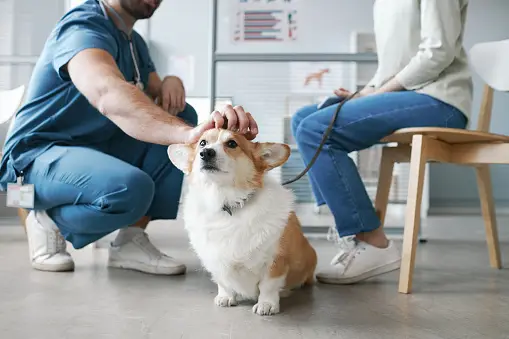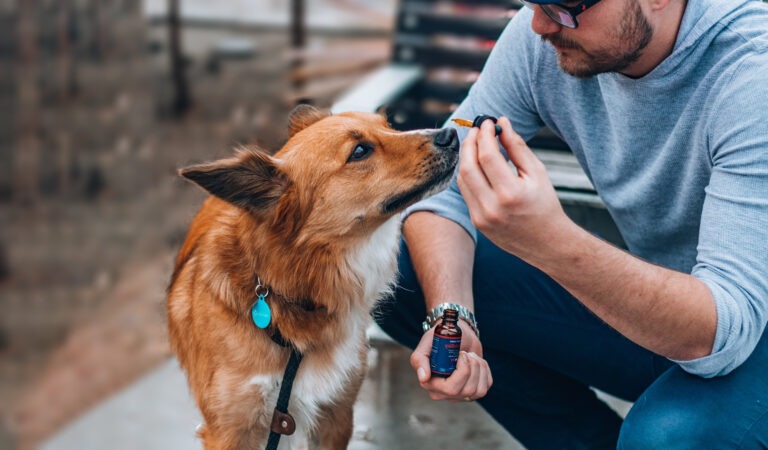When you’re thinking about taking care of your furry friend, it’s important to understand what spaying and neutering mean. These are surgeries that can help your dog stay healthy and happy.
Spaying is for female dogs, while neutering is for males. Spaying means removing the ovaries and uterus of a female dog, while neutering means removing the testicles of a male dog. These surgeries stop dogs from having babies.
But it’s not just about stopping puppies. Spaying and neutering can also help prevent health problems like certain cancers. It can also make your dog less likely to roam around and get into fights.
So, if you want to keep your dog healthy and prevent unwanted puppies, spaying or neutering might be the right choice for you. Talk to your vet to learn more about these surgeries and how they can benefit your furry friend.
Benefits of Spaying/Neutering Your Dog
Find out why spaying/neutering your dog is beneficial for their health and behavior. Learn how this routine procedure can promote a healthier, happier life for your beloved pet.
| Benefits | Spaying | Neutering |
|---|---|---|
| Prevention of Unwanted Litters | Prevents pregnancy and eliminates the risk of unwanted litters | Prevents reproduction, reducing the risk of accidental breeding and unwanted puppies |
| Reduction in Reproductive Disorders | Reduces the risk of reproductive disorders such as pyometra (uterine infection) and mammary tumors | Reduces the risk of testicular cancer and prostate problems |
| Decreased Risk of Certain Cancers | Reduces the risk of ovarian and uterine cancers, as well as mammary tumors | Reduces the risk of testicular cancer |
| Behavioral Improvement | Decreases aggression, roaming, and marking behaviors | Decreases aggression, roaming, and marking behaviors |
| Elimination of Heat Cycles | Eliminates heat cycles, preventing associated behaviors | Reduces hormonal behaviors associated with mating |
| Longer Lifespan | May lead to a longer, healthier life due to reduced cancer risks | May lead to a longer, healthier life due to reduced cancer risks |
| Contribution to Population Control | Helps control pet overpopulation by reducing the number of intact females capable of breeding | Helps control pet overpopulation by reducing the number of intact males capable of breeding |
| Financial Savings | Potential cost savings from preventing unplanned litters and related health issues | Potential cost savings from preventing unplanned litters and related health issues |
Both spaying and neutering offer numerous benefits for your dog’s health, behavior, and overall well-being, as well as for the broader community by helping to control pet overpopulation.
Risks and Considerations of Spaying/Neutering Your Dog
Gain insights into the risks associated with spaying/neutering your dog. From surgical complications to hormonal changes, discover important considerations before making this decision
| Risks and Considerations | Spaying/Neutering |
|---|---|
| Surgical Risks | Anesthesia complications, infection, bleeding |
| Weight Management | Increased risk of weight gain and obesity |
| Urinary Incontinence | Potential risk, especially in females after spaying |
| Impact on Long-Term Health | May increase the risk of certain health issues, such as orthopedic problems or hormone-related conditions |
| Behavioral Changes | May lead to changes in behavior, including decreased aggression and roaming |
| Timing Considerations | Optimal timing may vary based on breed, age, and health status |
| Alternatives | Hormone-sparing surgeries, chemical contraceptives, behavioral modification techniques |
Right Timing to Spay or Neuter Your Dog
Choosing the optimal timing for spaying or neutering your dog is crucial for their health and well-being. Here’s what you need to know about timing:
- Early vs. Traditional Spaying and Neutering: Traditionally, dogs were spayed or neutered around six months of age. However, there’s growing evidence suggesting that early spaying or neutering, before the first heat cycle, may offer certain health benefits, such as reducing the risk of mammary tumors and certain reproductive cancers.
- Breed and Size Considerations: The ideal timing for spaying or neutering may vary depending on your dog’s breed and size. Large or giant breed dogs may benefit from delayed spaying or neutering to allow for proper growth and development of their bones and joints. Small breed dogs, on the other hand, may reach sexual maturity earlier and may benefit from earlier spaying or neutering.
- Behavioral Considerations: Spaying or neutering can influence your dog’s behavior, including reducing aggression, roaming, and marking behaviors. The timing of the procedure may affect the development of these behaviors, so it’s essential to consider your dog’s behavior and temperament when deciding when to spay or neuter.
- Health Implications: Spaying or neutering at a younger age may offer certain health benefits, such as reducing the risk of certain cancers and reproductive disorders. However, early spaying or neutering may also have potential drawbacks, such as an increased risk of orthopedic issues and urinary incontinence in some dogs. It’s essential to weigh these factors and consult with your veterinarian to determine the best timing for your dog.
- Consultation with Your Veterinarian: Ultimately, the decision about when to spay or neuter your dog should be made in consultation with your veterinarian. They can provide personalized recommendations based on your dog’s breed, age, health status, and individual needs.
By considering these factors and consulting with your veterinarian, you can make an informed decision about the timing of spaying or neutering that will promote your dog’s long-term health and well-being.
Behavioral Changes After Spaying or Neutering Your Dog
Spaying or neutering your dog means having a surgery to stop them from being able to have puppies. People do this for many reasons, like controlling the number of dogs or because it’s good for their health. But one big thing that people think about is how it might affect their dog’s behavior. Let’s look at some of the ways it can change things:
- Less Likely to Fight: Dogs that have been spayed or neutered tend to be less aggressive. This means they’re less likely to get into fights with other dogs or even people.
- Staying Closer to Home: Dogs that haven’t been spayed or neutered often wander off looking for mates. But after the surgery, they’re more likely to stick close to home.
- Less Marking: Both male and female dogs mark their territory with pee. But after being spayed or neutered, they might do this less often.
- More Relaxed: Dogs that have been spayed or neutered are often calmer. They don’t get as worked up or anxious, which can make them easier to be around.
- Less Humping: Dogs sometimes hump things because they’re thinking about mating. Spaying or neutering can make them do this less.
- Easier to Train: Without the distraction of hormones, dogs might pay better attention during training. This means they could learn commands more easily.
- Possibly Gaining Weight: One downside is that spayed or neutered dogs might gain weight more easily. It’s important to watch their diet and make sure they get enough exercise.
By understanding the potential behavioral changes associated with spaying or neutering, you can better prepare for your dog’s post-operative care and support their overall well-being.
Alternatives to Spaying and Neutering Your Dog
While spaying and neutering are common procedures for controlling pet populations and promoting health, there are alternative options to consider. Here’s a look at some alternatives to spaying and neutering your dog:
- Hormone-Sparing Surgeries: These procedures involve removing only a portion of the reproductive organs while preserving hormonal function. For example, in females, a partial hysterectomy may be performed instead of full spaying, leaving the ovaries intact. Similarly, in males, a vasectomy may be done instead of full neutering, leaving the testicles intact. These surgeries allow for reproductive control without completely eliminating hormone production.
- Chemical Contraception: Certain medications or injections can temporarily suppress fertility in dogs without the need for surgery. These options may be suitable for pet owners who are hesitant about invasive procedures or who wish to delay spaying or neutering for medical or behavioral reasons.
- Behavioral Modification: Training and behavior modification techniques can help manage unwanted behaviors associated with intact dogs, such as roaming, aggression, and marking. Working with a qualified dog trainer or behaviorist can provide strategies to address these issues effectively.
- Monitoring and Management: Responsible pet ownership involves closely monitoring your dog’s reproductive health and behavior and taking appropriate measures to prevent unplanned breeding. This may include keeping your dog indoors or supervised when in heat, using physical barriers or deterrents to prevent mating, and ensuring proper identification and registration to facilitate responsible breeding practices.
- Fertility Control Programs: Some communities implement fertility control programs to manage stray and feral dog populations without resorting to widespread spaying and neutering. These programs may involve methods such as immunocontraception (vaccines that prevent reproduction) or trap-neuter-return (capturing, sterilizing, and returning stray dogs to their original location).
While spaying and neutering remain effective methods for population control and health management in dogs, exploring alternative options can provide additional choices for pet owners seeking a personalized approach to their dog’s reproductive care.
Final Thoughts
When you’re deciding whether to spay or neuter your dog, there are some important things to think about. Both procedures have benefits for your dog’s health and behavior. Spaying is for female dogs and involves removing their ovaries and uterus. This helps prevent infections and reduces the chances of cancers. Neutering is for male dogs and involves removing their testicles. It can lower the risk of certain cancers and also helps with behaviors like wandering and marking territory.
You should consider your dog’s age, breed, and lifestyle when making this decision. It’s also a good idea to talk to your vet, who can give you personalized advice. Think about how your choice might affect other animals in your community too.
Overall, spaying and neutering are important for keeping your dog healthy and happy, and they also help control the number of pets without homes.







